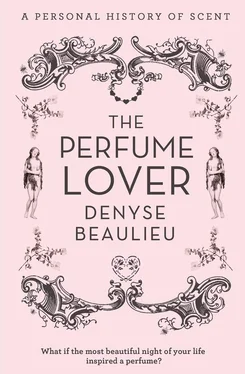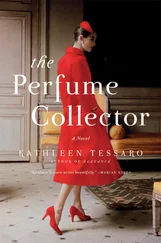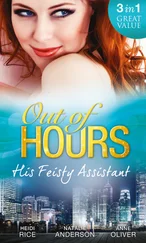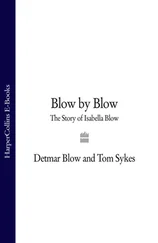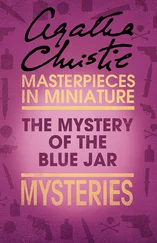1 ...6 7 8 10 11 12 ...17 Surprised? Yes, the vanilla pod, as opposed to the synthetic vanillin more frequently used in fragrances and desserts, does have a tobacco facet, and that’s what Bertrand has chosen to underline, down to the slight vegetal mustiness of cured tobacco leaves. This is one of the things I find most intriguing about his style: the way he slips in weird notes that mess up the prettiness of a scent. For instance, the quasi-surrealistic way he grows a Cuban cigar out of a vanilla pod, as though that had been the pod’s subconscious desire all along.
Bertrand’s been making good on his promise: this is my third lesson in three weeks. Today I’ve asked him to explain the structure of one of his compositions so that I can re-enact the demonstration in my London course: I’m making good on my promise too, since I told him I’d include his work in the syllabus. I’d be a fool not to. After all, the man is one of the most distinctive perfumers in the business, one of the few who has enough artistic liberty to develop a consistent oeuvre and to impose his vision on the projects he takes on.
It took balls to stake that claim. He had to break out of a system that was set up in the late 30s and still dominates the industry, similar in its set-up to the system of the classic Hollywood era, with directors on the payroll of studios and forced to work within their constraints. Like the overwhelming majority of his colleagues, Bertrand was thus employed by Symrise, one of the big labs that produce aromatic materials and compositions.
He’d wanted to be a perfumer since the age of sixteen, when a girlfriend introduced him to Chanel N°19, but he’d been advised to skip the Versailles perfumery school and get an internship in Grasse. As he had no contacts there, he gave up, convinced he’d never become a perfumer. After studying biochemistry in Marseilles, he took a gap-year to tramp around South America before coming back to France to study for a degree in genetics. It was then he learned that a friend of his had won the coveted internship in Grasse: at last, he’d found the contact he needed. He got one too, stayed on, and ended up in the Paris branch of the company, where he was mentored by Jean-Louis Sieuzac, who authored such best-sellers as Opium for Yves Saint Laurent, Dune and Fahrenheit for Christian Dior or Jungle Elephant for Kenzo. In time, he made his way up to senior perfumer.
Being a perfumer on the payroll of a big lab can be a thankless job. Fine fragrances are the most prestigious gigs but, more often than not, you’re put to work on functional fragrances, the stuff that goes into detergents, cosmetics or hygiene products, which is where the big money is because of the volumes involved. It’s technically challenging and it can be aesthetically gratifying – just smell Ajax Spring Flowers and tell me if it’s not as good as some of the juices that are sold in department stores – but it’s certainly not glamorous.
Fine fragrance perfumers don’t necessarily get much more wiggle room because of the way the system is set up. It goes like this: the client, usually a designer brand, wants to put out a new fragrance. The brand’s marketing team comes up with the name, the bottle design and the concept for an ad campaign before anyone remembers that something actually needs to go into that bottle. A brief specifying the style, target market and cost of the product is knocked together and handed out to several competing labs. The staff perfumers who are interested in the project must come up with proposals, usually within a matter of a few weeks. The budget rarely goes over sixty to eighty euros per kilo of oil (the blend of aromatic materials to which alcohol will later be added). By way of comparison, the price per kilo for niche perfumes can shoot up to four hundred or even six hundred euros, but what actually ends up in a department-store bottle is worth less than ten euros. The labs present their proposals, which they develop on spec. The client selects one. The perfumer goes back to the lab to tweak it; sometimes several team up to accelerate the process. If it is a big project, the product is tested on consumer panels, after which it is tweaked some more, often until every original molecule has been blasted out of its body. If sales don’t do well, it may be tweaked again.
The system is hardly conducive to creativity. Perfumers learn to do compositions that test well in order to win the brief: after all, they’ve been hired to make money for their employers. What tests well is what consumers are familiar with. What consumers are familiar with are either best-selling fragrances or everyday products like shower gels, fabric softeners and shampoos. Recipes that sell well get around from one perfumer to another and from one company to another; they are recycled endlessly, so that you find the same accords in every fragrance. The same twenty to thirty raw materials are used over and over, out of the thousands that exist. On top of that, the systematic use of gas chromatography, a method that allows companies to analyse the competition’s products, has led to a practice called the ‘remix’: take current best-sellers, cut and paste, and you’ll have the next designer-brand juice. Another practice is called the ‘twist’: take a best-seller, change a couple of things in it and presto! Pour it into a bottle. If you ever wondered why everything smells the same in department stores, now you know.
Like so many of his colleagues, Bertrand became a perfumer because he was fascinated by the classics. The market forced him to go in another direction, though from the late 90s onwards he was lucky enough to work with people who did value originality and afforded him an opportunity to develop his distinctive style. But he was too much of a maverick to fit into the ‘studio system’ for ever, which is why he and his employers eventually decided to part ways by common accord.
‘I was asked to do things that didn’t interest me and I had a lot of trouble coming up with a decent product both for the company and for the brand.’
‘So I guess you weren’t offered a lot of stuff to do …’
‘I wasn’t offered anything any more.’
‘Because you were difficult?’
‘Because I told them to bugger off.’
‘In other words, you were a pain in the ass.’
‘I was a pain in the ass, that you can be sure of!’ he chuckles.
I’m quite sure Bertrand can be a pain in the ass, and I can readily envision his temper flaring up if he’s prodded too hard. That’s why I’m a little wary of asking him if he was serious when he said my story would make a great perfume. What if he brushes me off? I’m hoping he’ll bring the subject up himself, but right now he’s busy playing show-and-tell with vanilla absolute, talking me through its facets in a gleeful, earnest voice, as though he were rediscovering it all over again. Vanilla has animal, leathery and smoky facets, he enthuses; it also has woody, ambery, spicy and balsamic facets, and even unpleasant medicinal notes. That’s what he wanted to get at: to draw out every aspect of the vanilla pod.
In the scent, the vanilla acts as the core of a star-shaped structure. Its different facets are picked up and amplified by the other materials, to form a second, phantom vanilla; an olfactory illusion sheathing the real thing; a space in which all the notes resonate.
As Bertrand speaks, I scribble a diagram with vanilla as the ‘sun’ and the other materials as ‘planets’: rum, orange, davana (fruity, boozy), immortelle (walnut, curry, maple syrup, burnt sugar), tonka bean (hay, tobacco, almond, honey) and narcissus (hay, horse, green/wet, floral). Pretty soon Bertrand is scribbling in my notebook too, writing down the effects conjured when the different materials meet. For instance, rum and immortelle emphasize the woody/ambery facets: because rum is aged in oak casks, it already has a vanilla flavour imparted by the oak (vanillin can be synthesized from by-products of the wood industry). It all ties in: the sheer logic of it is limpid.
Читать дальше
